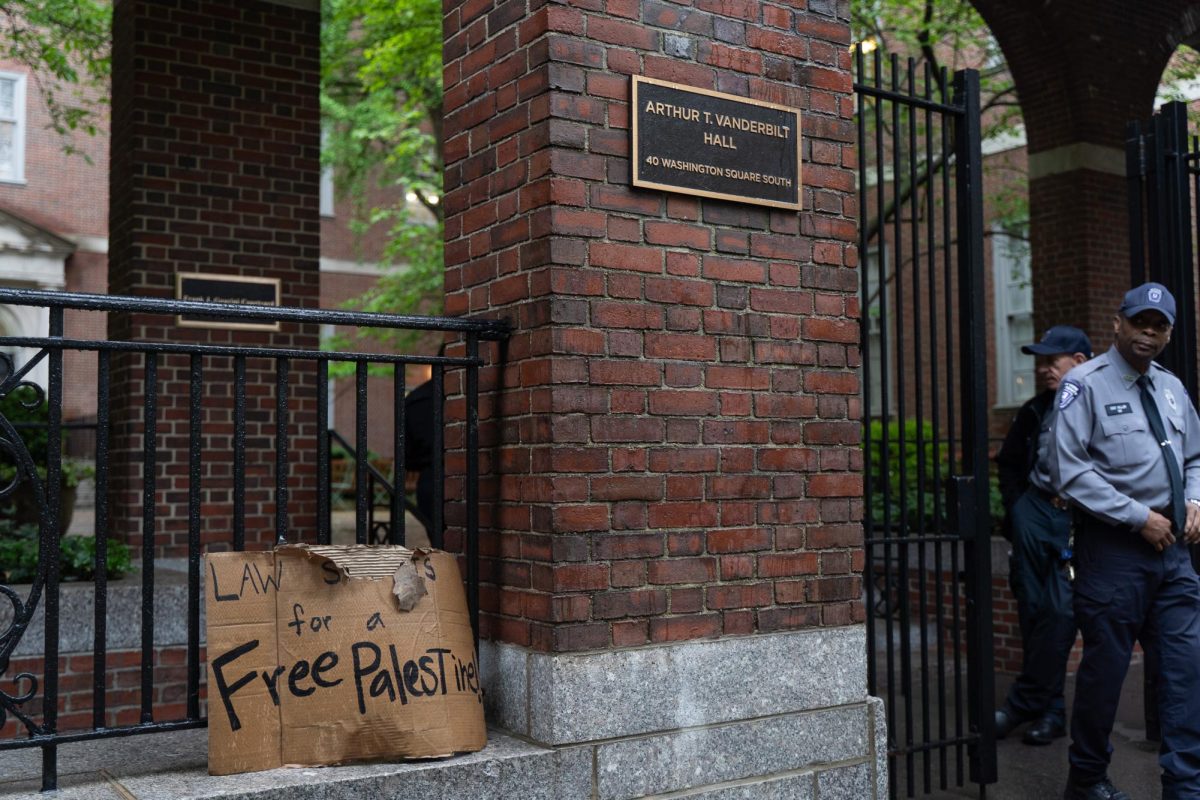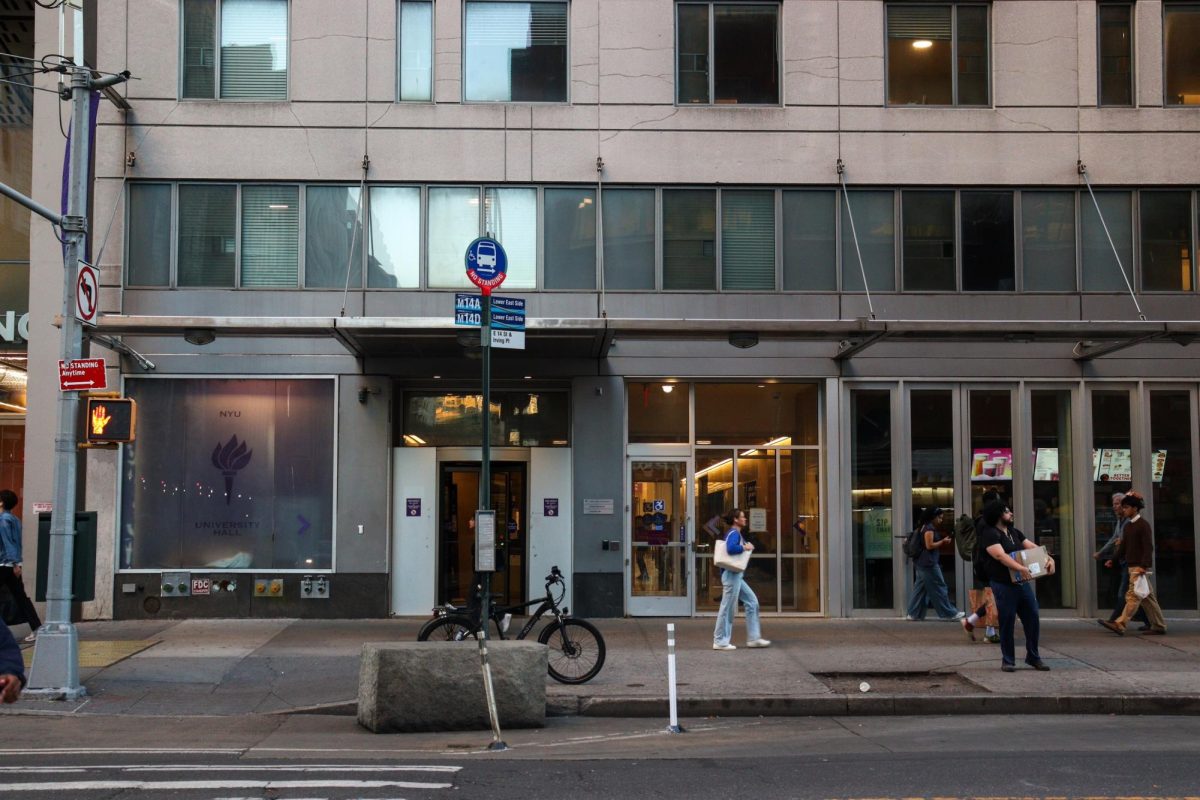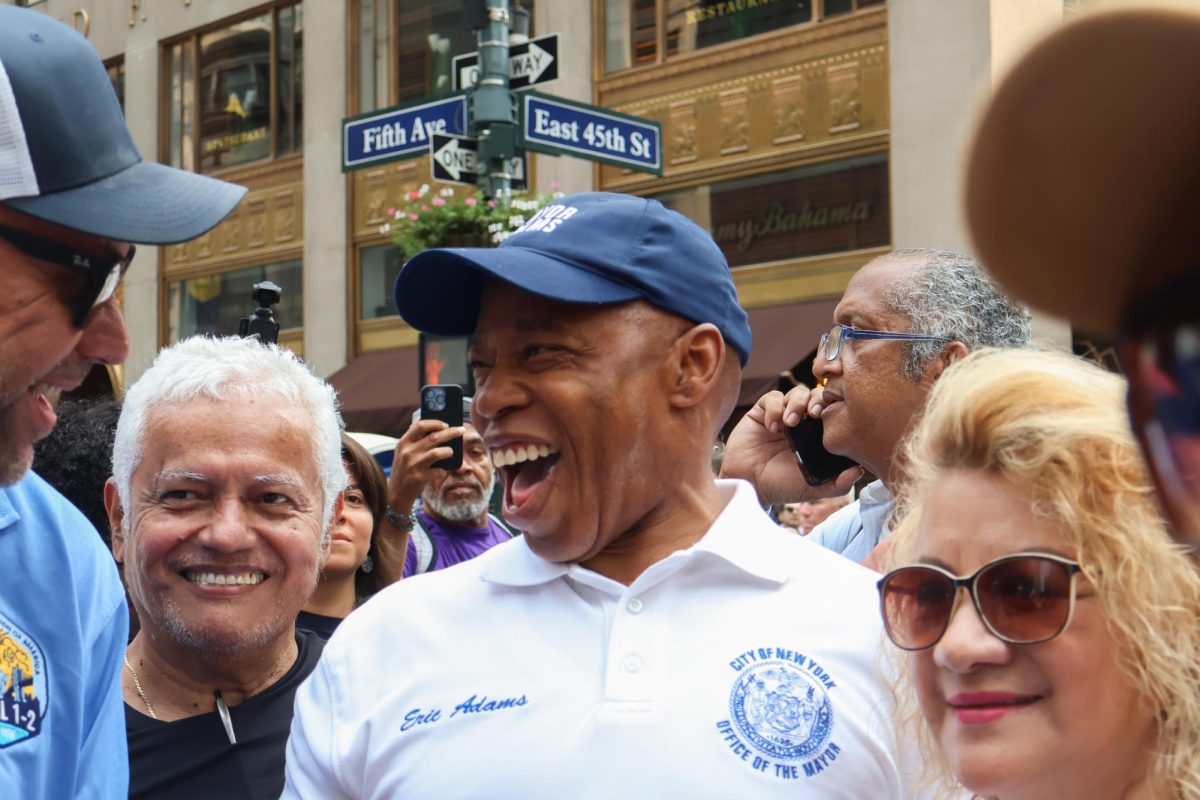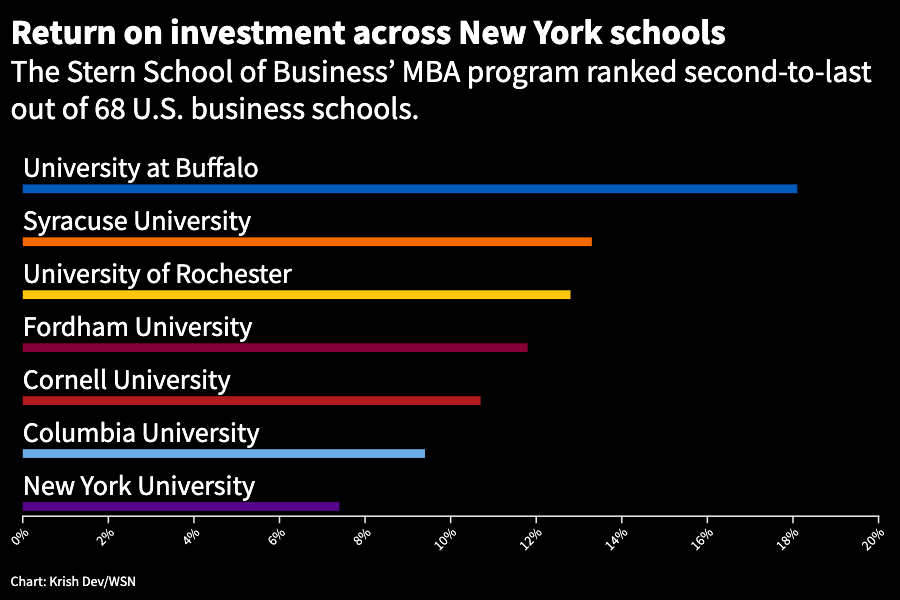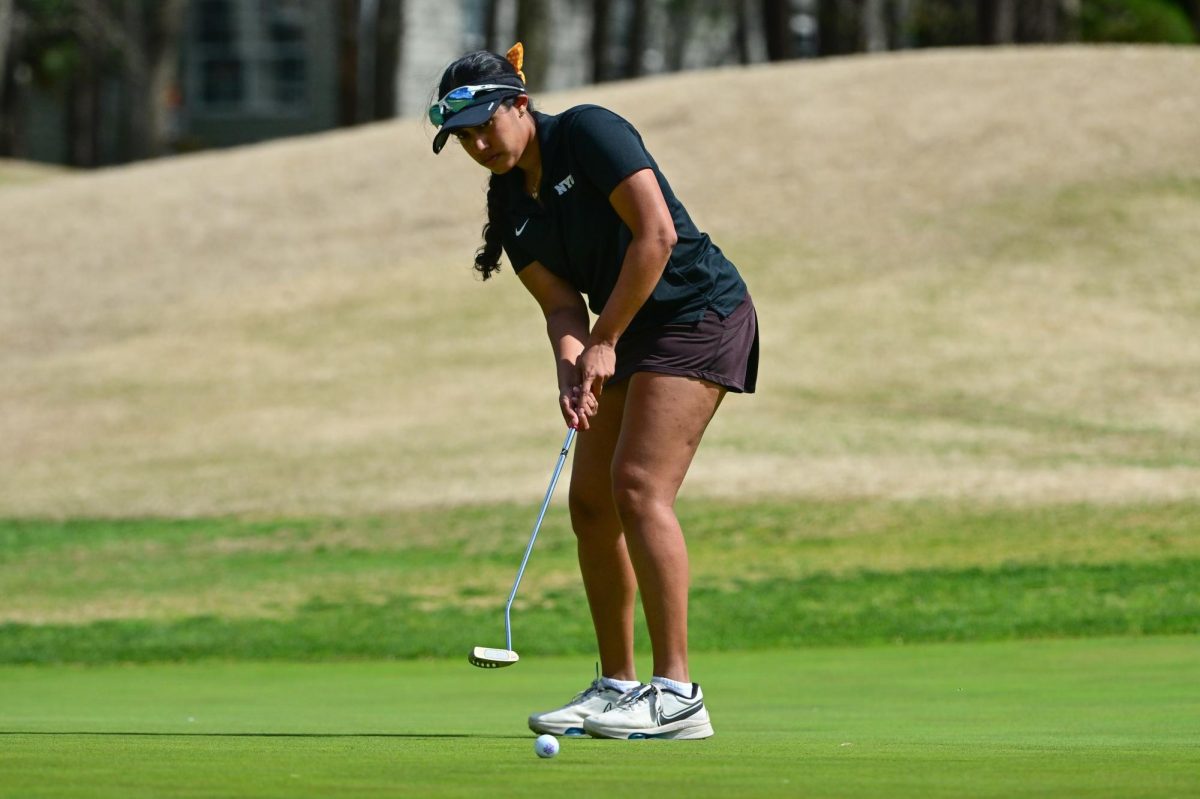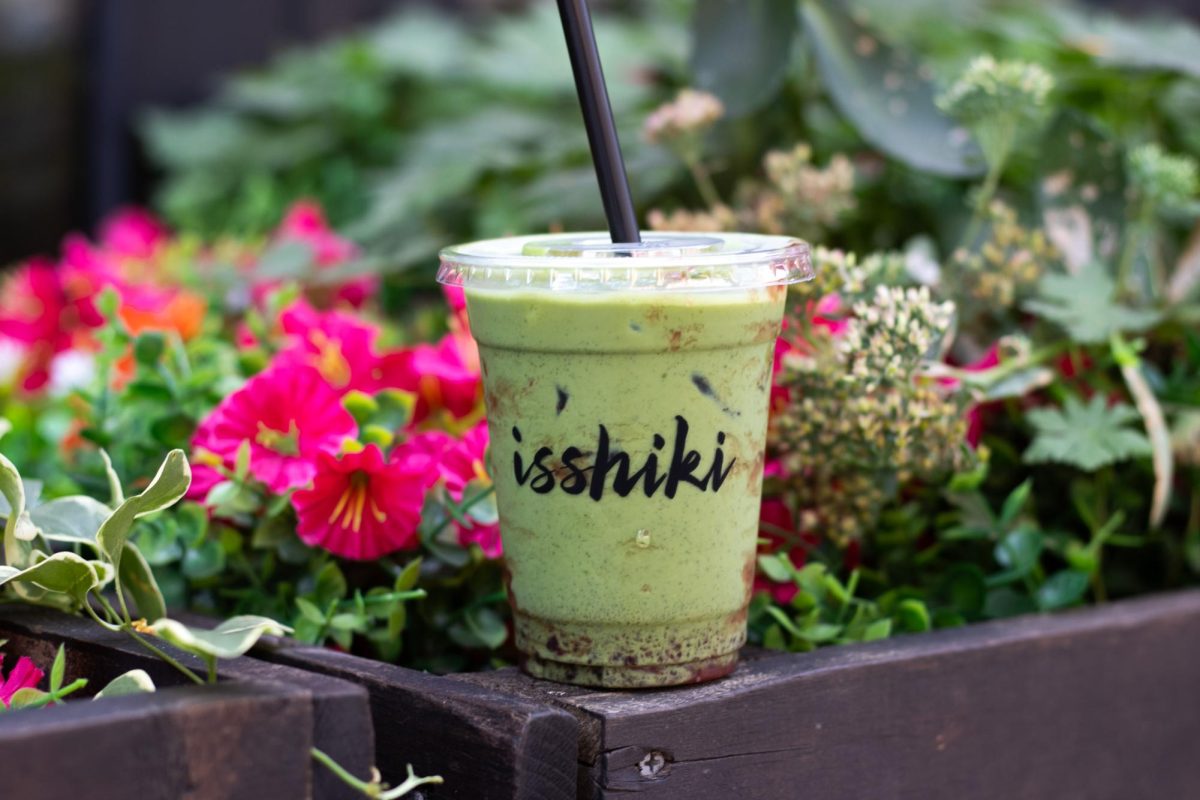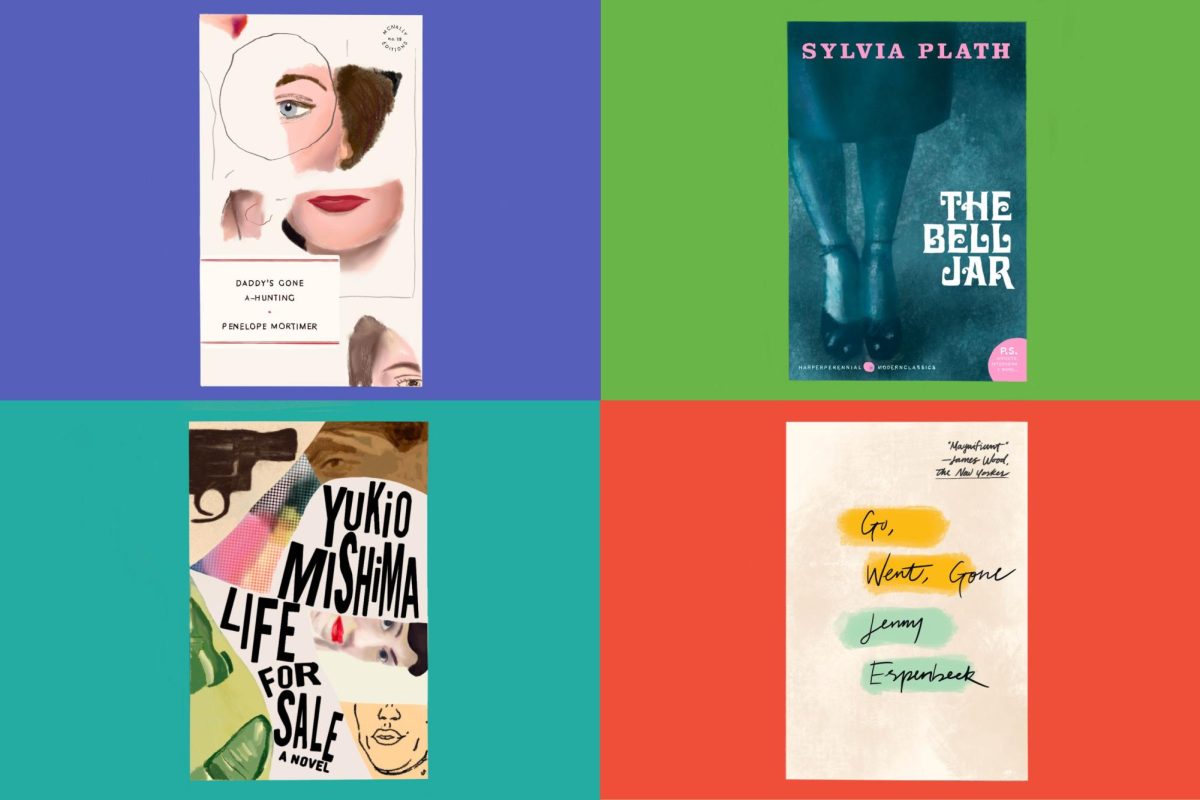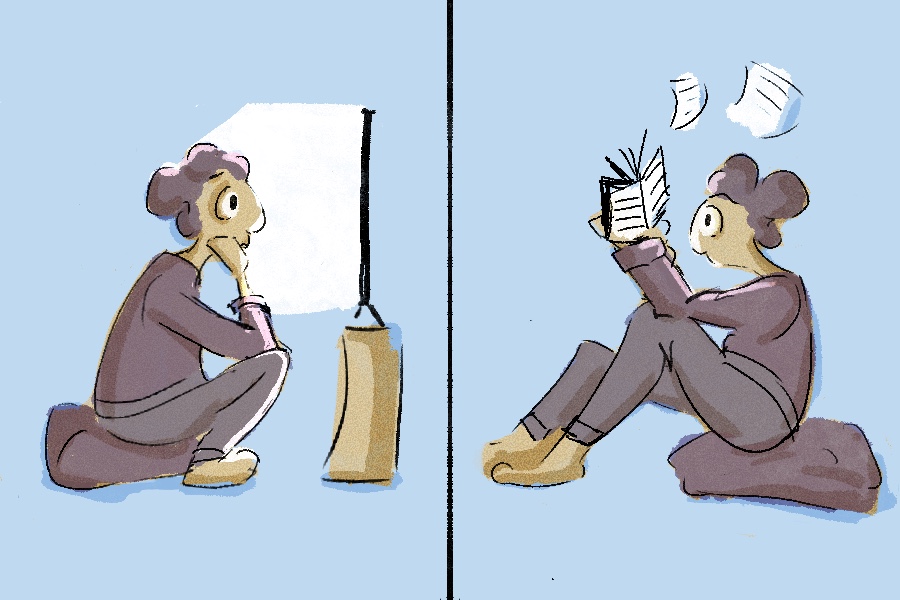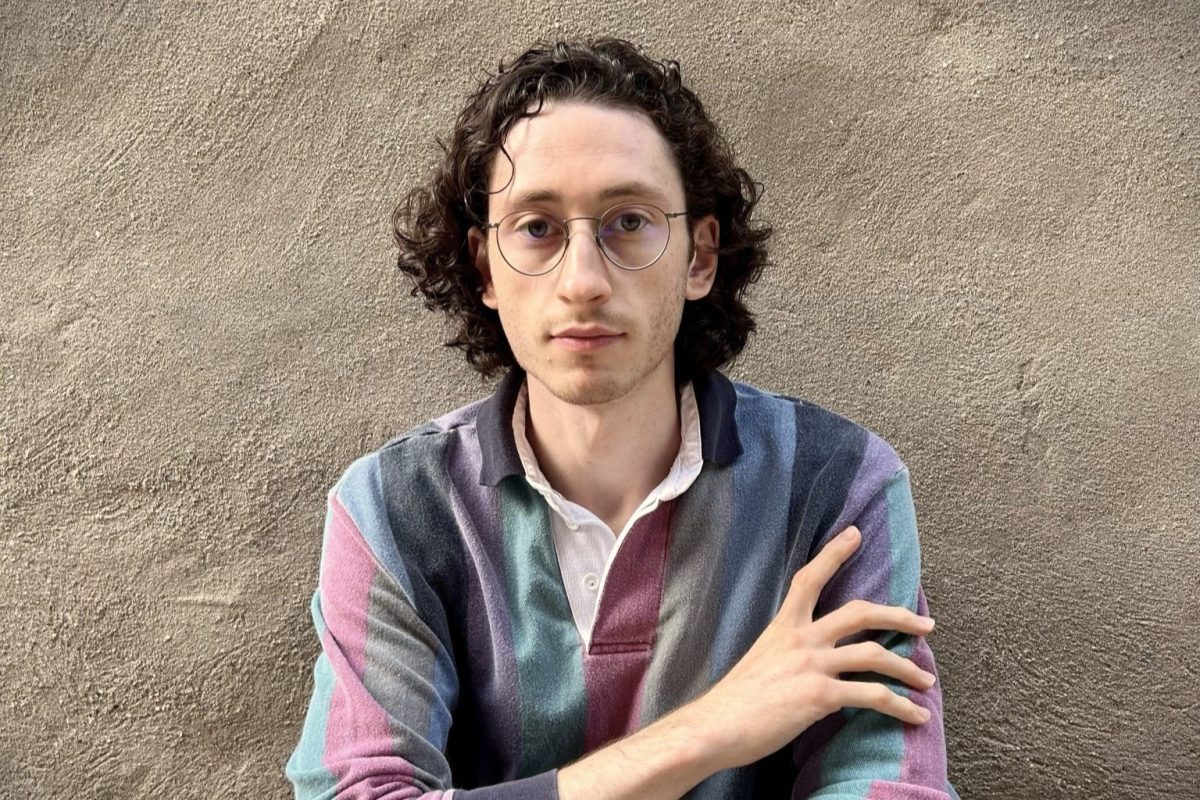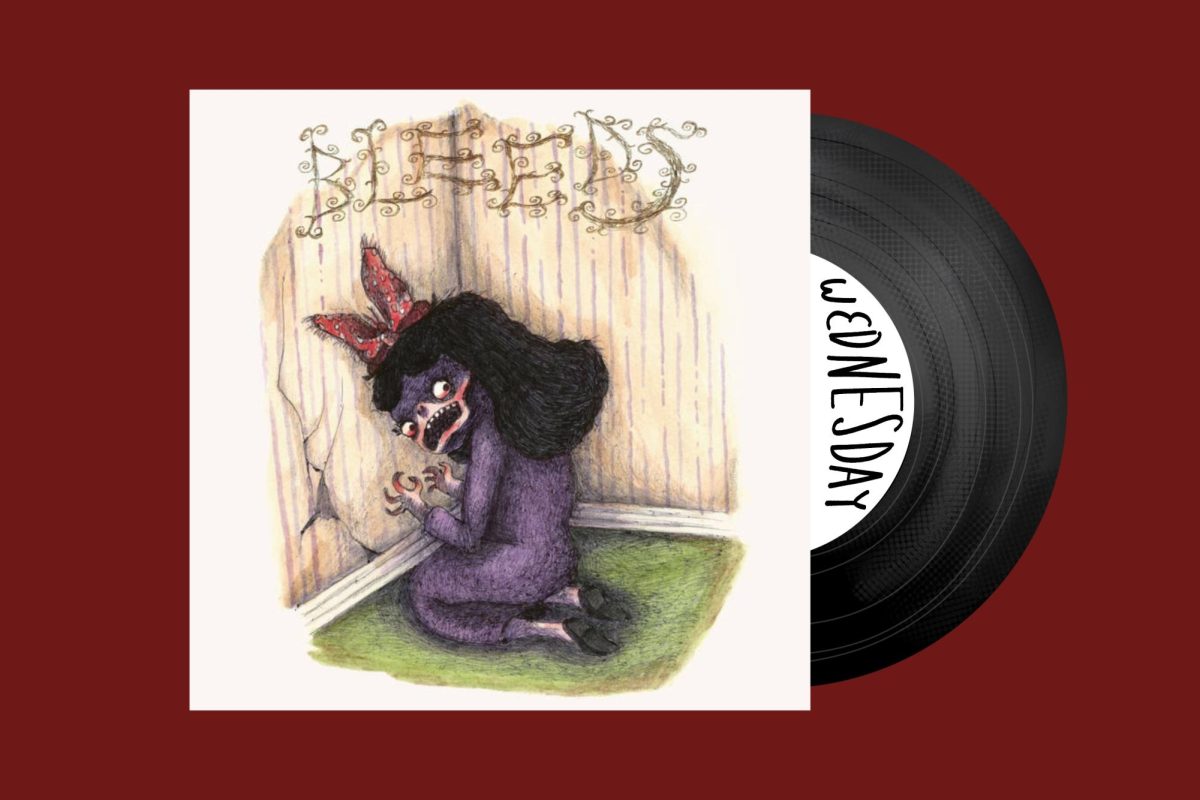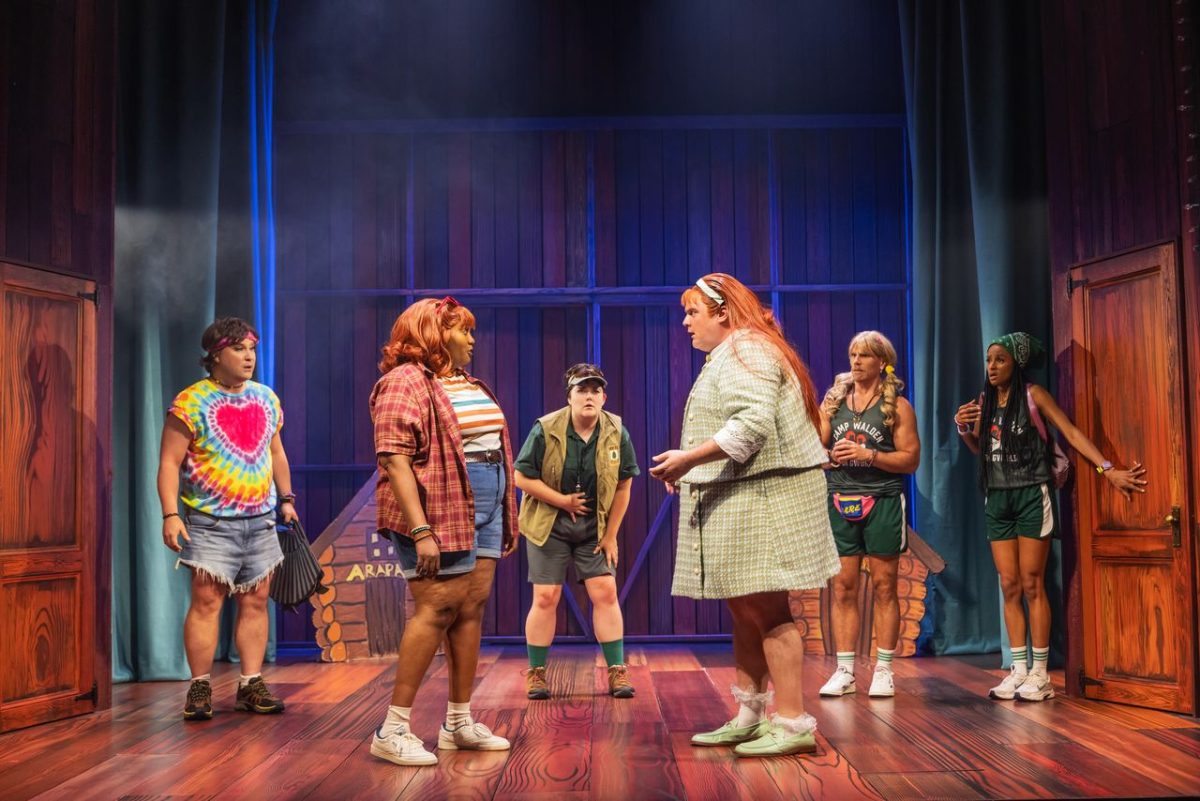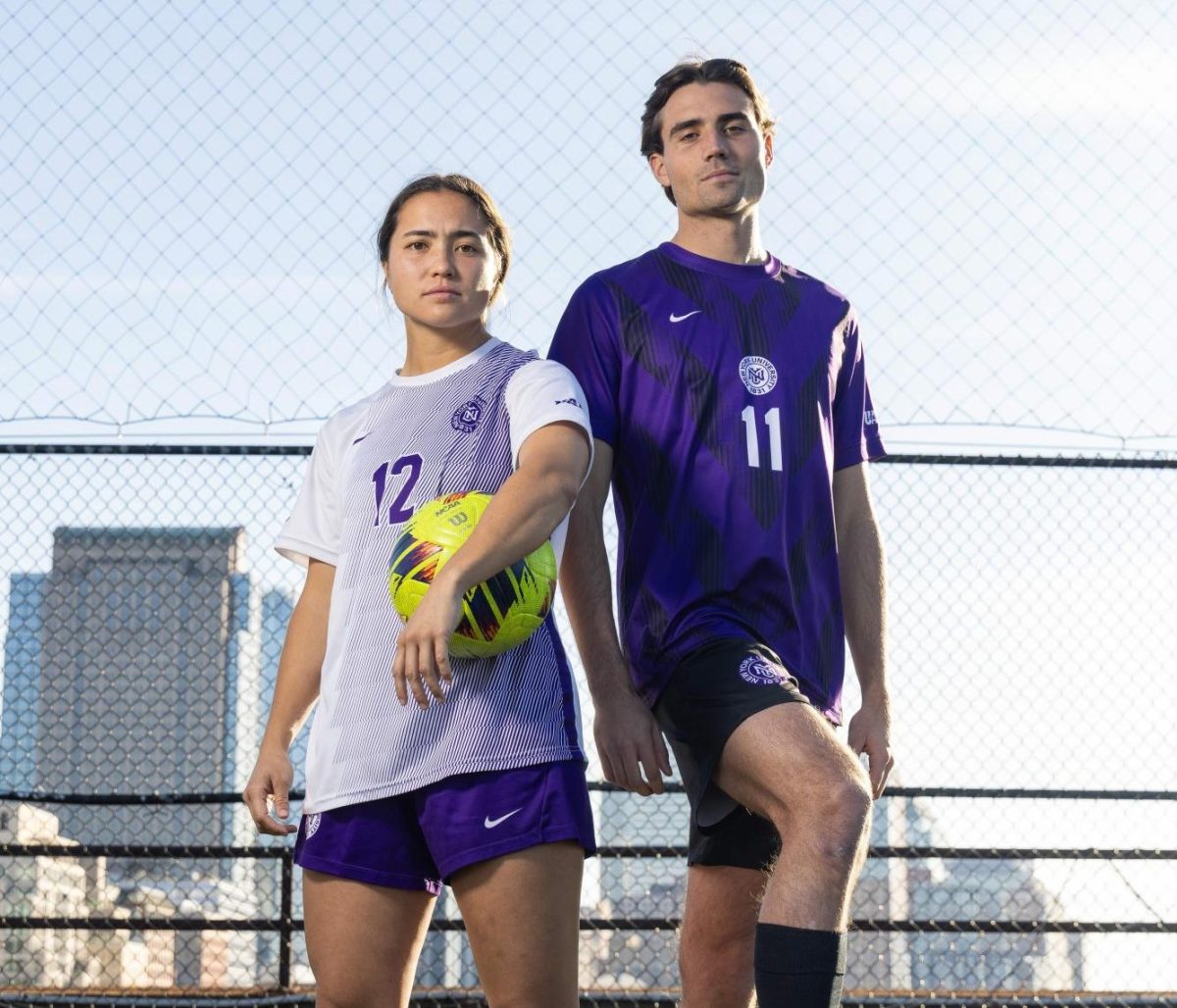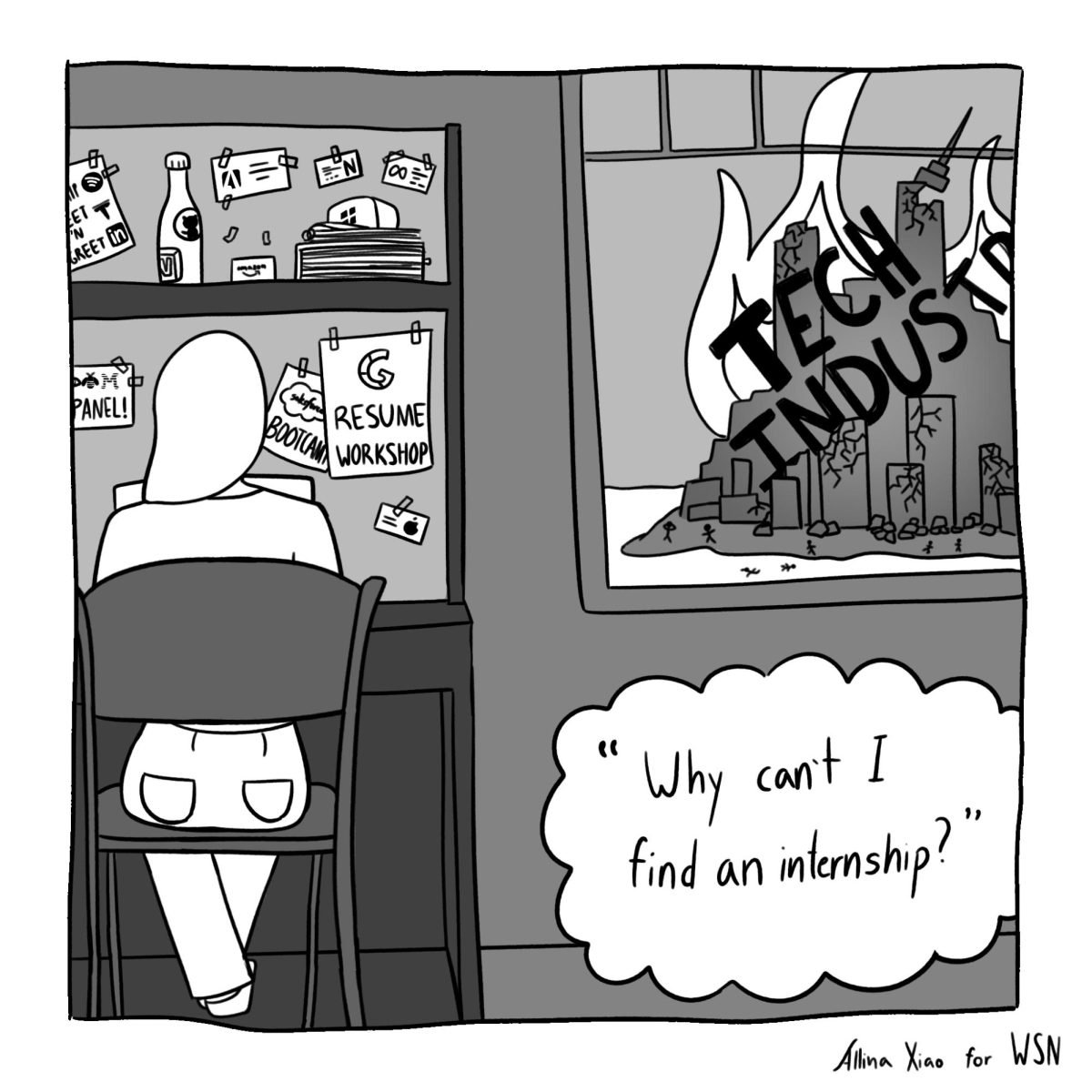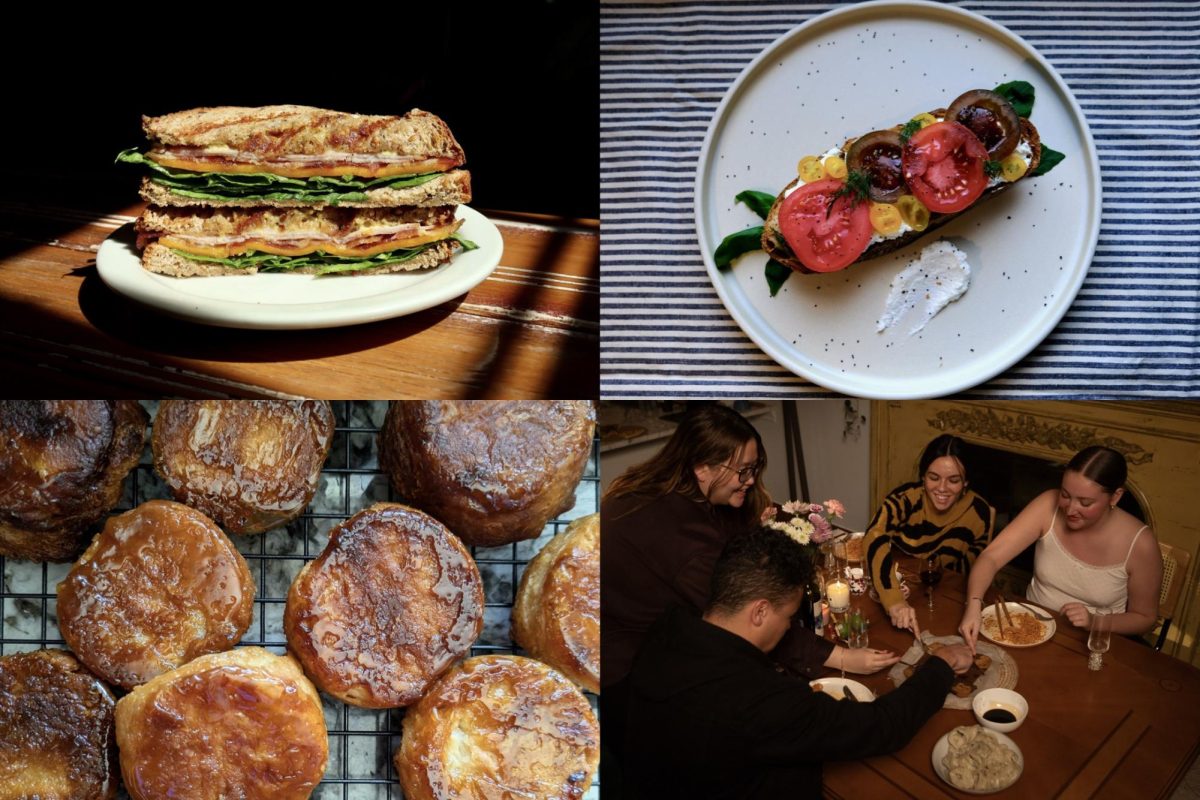On Friday, Oct. 11, NYU’s Indian Cultural Club hosted its annual Garba at the Eisner and Lubin Auditorium in the Kimmel Center for University Life, where students gathered for a night of festivities.
Garba — a folk dance originating in the northern state of Gujarat, India — is a devotional dance honoring the feminine form of divinity performed during Navratri, a nine-day Hindu festival. Dancers move counterclockwise in a circle, starting slowly then eventually building to a joyous, high energy, performance. The dance is accompanied by singing, clapping and waving colorful sticks called dandiya.
Traditionally, those celebrating Garba wear colorful costumes while performing, and NYU students were no exception. Students entered the auditorium wearing their finest attire — lenghas, a traditional Indian garment comprised of a long skirt paired with a blouse and scarf, and kurtas, a loose shirt or tunic. Bright reds, yellows, blues, pinks — every color of the rainbow with dazzling sequins, floral embroidery and gold fabrics filled the auditorium.
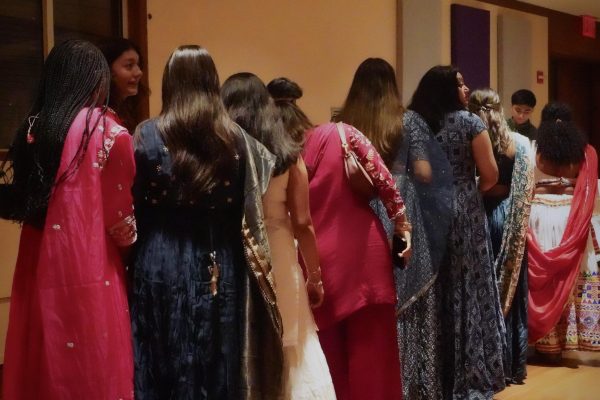
A large DJ booth was set up on the stage of the auditorium, playing and mixing popular traditional Indian music. Encircling the stage were tiny plastic diyas, thumb oil lamps lit during the festival of Diwali, a Hindu holiday celebrated in the fall.
The celebration included many classic Indian dishes — paneer tikka masala, vegetable biryani, naan and raita — an Indian side dish made with yogurt, spices and vegetables. Before dancing, students excitedly lined up to grab a bite, talking amongst themselves or singing along with beloved Bollywood music.

“Garba is something I grew up doing at home, so this really gives me a sense of community,” CAS sophomore and ICC committee member Shriya Dani said.
Dani explained that not only NYU students went to the ICC’s annual Garba, but even students from other New York City colleges attended.
“It was really nice because it wasn’t just people from NYU, but also other colleges that might not have that sort of experience at their school,” Dani said.
Eventually, Garba began to take place by eager students — clapping to the beat, the students formed a dance circle. It started simple, but gradually got more intricate, with legs going up and down, and people spinning and twirling. Soon, more circles formed, with some students practicing their Garba moves on their own.
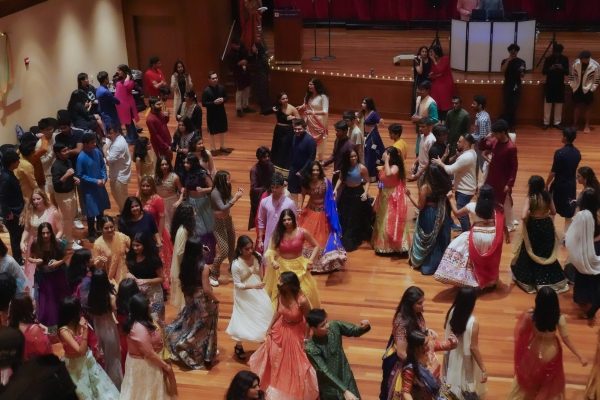
In a college of around 50,000 people, participating and planning events like Garba at NYU enables South Asian students to celebrate their culture.
“I didn’t have many South Asian friends, and that was different to me because I grew up around a big South Asian community,” Tandon Senior and ICC co-president Megan Bhatia said. “So I joined the ICC my sophomore year, and that is exactly what I have got.”
While Garba allowed for many Indian students to connect more closely with their heritage, it was also an opportunity for non-Indian students to learn more about the traditional Indian community. LS sophomore Christina Coviello attended the Garba event with her Indian roommate, even borrowing a lengha from her to wear for the event.
Like Coviello, there were many other non-Indian students that participated in the traditional dancing.
“I love experiencing different cultures, and it was really cool to see everybody dressed up from different parts of India,” said Coviello.
Students who wanted to rest from the dancing took photos in front of a red drape and columns of white flowers.
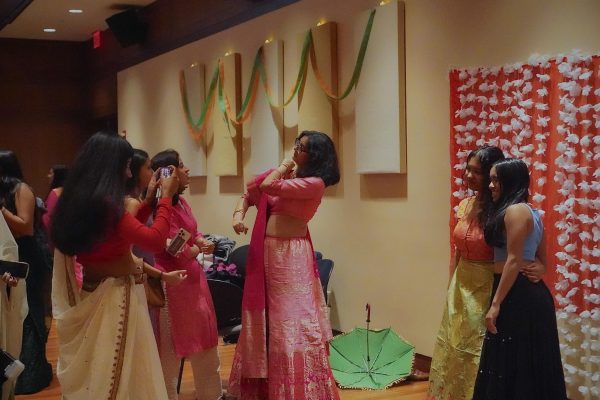
Garba was an opportunity for Indian students to learn about cultural differences within India, as the country contains multiple regions with differing practices. Stern senior Rohit Subramaniam joined the ICC events-planning committee as a junior, and was elected to the position of the events chair this year. Subramaniam’s first time doing Garba was the ICC’s event his first year, and being of South Indian heritage, he explained that the South celebrates Navrati differently — for example, they don’t perform Garba.
“Beyond sharing this culture with non-Indian people, Garba also has the ability to share culture with other people within India because it’s so diverse, so that’s of big value for me,” Subramaniam said.
Similarly, students from India who never participated in Garba back in their homes had the opportunity for the first time at the ICC event, like Courant graduate student Arush Jasuja.
Halfway through the event, the lights of the auditorium were dimmed, and the DJ shook things up — switching from traditional Garba music to playing popular Bollywood hits, and even later playing English hip-hop music with a desi twist. Students gathered in the middle of the room, singing loudly and jumping and waving their hands up and down.
CAS sophomore Jahnavi Gupta from New Jersey highlights how the ICC’s Garba was reminiscent of her home, where there is a large South Asian community. Gupta has been able to make close friends by joining the ICC and attending their events.
“You can go out every weekend, but you can’t go to Garba every weekend,” Gupta said.
Contact Aryana Arora at [email protected].

